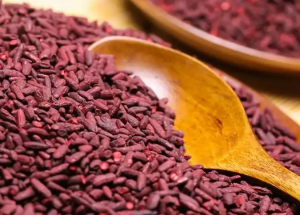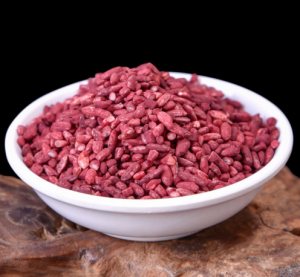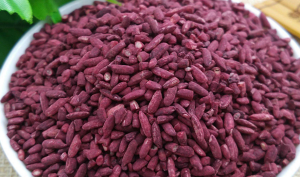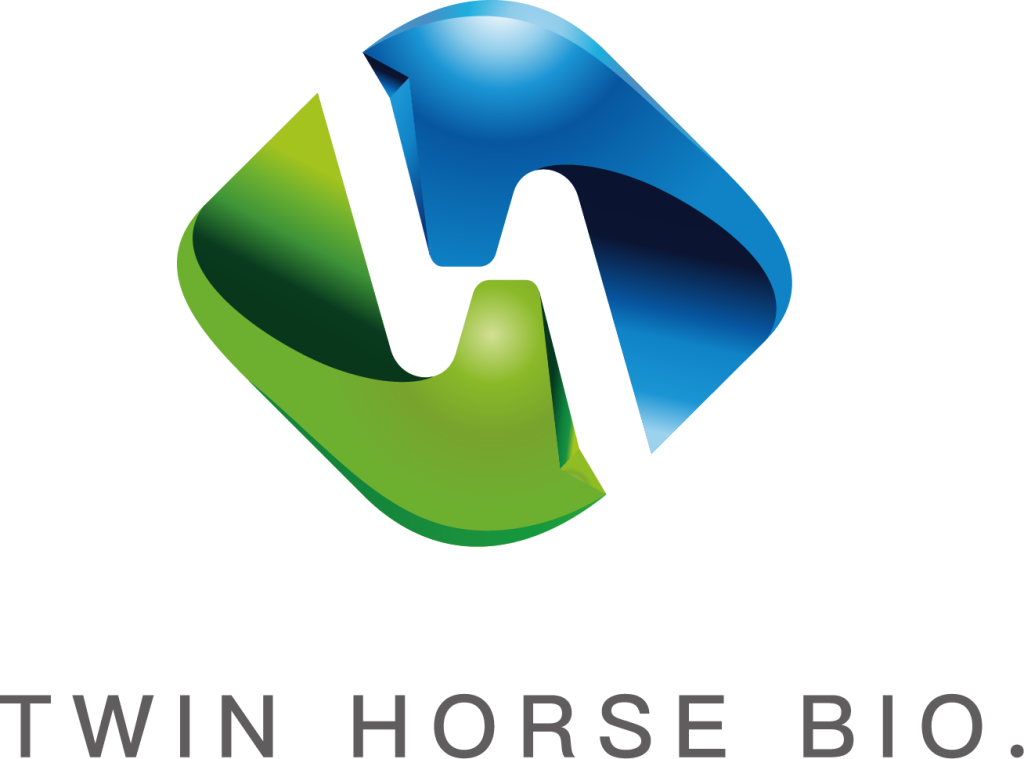Table of Contents
TogglePregnant or Breastfeeding Women
Special precaution is taken to be fully warned against red yeast rice in pregnancy and lactation because it is harmful both to the mother and the baby. Red yeast rice consists of monacolin K, a compound related to statins used in lowering cholesterol. Statins have been related to increase risks when one undergoes pregnancy, especially during the first trimester. Studies have shown that statins can increase the risk of birth defects up to 4%-6% versus the normal 3% baseline in the general population. These include heart defects and skeletal malformations, which again stress the need to avoid substances with statin-like effects during this crucial period.
During lactation, red yeast rice can also be harmful to infants. Newborns depend on developed liver and kidney systems to break down the substances passed through breast milk. Monacolin K may increase the load of an infant’s underdeveloped liver and may result in liver toxicity. According to pediatric studies, liver enzymes can increase manifold times in infants upon exposure to even minute quantities of injurious substances. For example, the enzyme levels in exposed infants were raised by 20%-30% compared to the unexposed ones. These results highlight the risks of active ingredient transmission of red yeast rice via breast milk.
Dietary and lifestyle changes have safer options for cholesterol control in pregnant and lactating women. High intake of fiber-rich foods such as whole grains, legumes, and vegetables can successfully lower cholesterol levels. Adding 10-25 grams of soluble fiber a day has been shown to decrease LDL cholesterol levels by 15%. Additionally, adding omega-3-rich foods like salmon, walnuts, and flaxseeds has been shown to improve heart health without the risks of red yeast rice. The second strategy involves regular moderate exercise. Moderate exercise such as walking or swimming for at least 150 minutes a week has been shown to enhance cardiovascular function and cholesterol levels in pregnant women.

Individuals with Liver Disease
Individuals with liver disease are in a group that should exclude red yeast rice from consumption, as it might enhance the effects of disordered liver function. It contains monacolin K, which is metabolized by the liver and hence will be an extra load on it. When people already suffer from hepatitis, cirrhosis, or fatty degeneration of the liver, the addition of monacolin K metabolism will lead to further liver damage. Indeed, studies have documented that monacolin K can raise liver enzymes like ALT and AST by as much as 30% in people with liver dysfunction, which is an indication of liver stress or damage.
Medication and supplement adverse reactions are already more common in patients with liver disease. For instance, one study among people with non-alcoholic fatty liver disease found that 20% of the participants developed high levels of liver enzymes after taking red yeast rice, while only 5% of the participants without liver problems did. This may further cause symptoms like fatigue, jaundice, and abdominal pain, which are signs of deteriorating liver health. Taking the red yeast rice over the long term significantly accelerates liver damage, eventually impairing the liver’s potential to process very essential nutrients and drugs effectively.
There are more efficient yet safer alternatives available than using red yeast rice to balance cholesterol levels. Some modifications in diet, saturated fat reduction, and plant-based fat additions will serve to reduce LDL levels by 10%-15% without loading the liver. Omega-3 fatty acids, provided by food sources such as salmon and chia seeds, also lower triglycerides as much as 25%. Such dietary modifications may be instituted for approximately $20 to $30 a month for quality food sources and may well be equal to or less than the red yeast rice supplements.

People Taking Statins
Individuals on statin medication should not take red yeast rice because of the possibility of side effects and interactions with other drugs. Red yeast rice naturally contains monacolin K, an active ingredient closely related to the widely used statin, lovastatin. Taking them together raises the overall dose of statins in the body and can increase the risk of side effects, such as muscle soreness and liver damage. Clinical studies have confirmed that the combination of RYR with prescription statins increases CK levels by 50% or greater, a marker for skeletal muscle damage and precursor to rhabdomyolysis in the most severe cases.
Likewise, liver complications increase when both red yeast rice and statins are taken together. Both substances undergo metabolic processing in the liver; this dual processing often overstresses the organ’s capacity for effective metabolism. Such overstress can elevate the liver enzymes, which is often a sign of liver stress or even damage. In 200 patients who were on statins, 15% with concurrent red yeast rice consumption resulted in significant enzyme elevations compared with only 3% that did not. The symptoms that tended to occur more often in the group with red yeast rice involvement were fatigue, dark-colored urine, and abdominal discomfort. Again, this shows the risks of combination.
From a financial point, it is also not useful to use statins combined with red yeast rice; there is no extra use for patients. The estimated cost of statins drugs taken on average every month ranges from $5 to $50, depending on generic or branded medications. Red yeast rice supplements usually cost $15 to $30 per month. Patients may mistakenly believe that the combination of the two is more effective at lowering cholesterol, but studies demonstrate that this combination does not significantly improve results beyond that seen with statins alone. For example, LDL cholesterol reduction was only 1%-2% greater with the combination, while the risk of side effects doubled.

Individuals with Kidney Disease
People with kidney disease should avoid taking red yeast rice because it may increase the risk of kidney dysfunction. Red yeast rice contains monacolin K, an active ingredient that may cause muscle breakdown, a condition known as rhabdomyolysis. This condition releases myoglobin, a protein toxic to the kidneys, into the bloodstream. In fact, studies have demonstrated that rhabdomyolysis can elevate creatinine levels, a marker of kidney function, by as high as 200% in severe cases. In patients with pre-existing kidney disease, this additional stress may cause severe impairment in renal function and even acute kidney injury.
Patients with chronic kidney disease are at an increased risk for the adverse effects of red yeast rice. Research has shown that individuals with CKD usually have impaired clearance of compounds such as monacolin K, leading to increased blood concentrations and toxicities. In one study, for example, 25% of CKD patients on red yeast rice reported an exacerbation in kidney function compared with only 5% in patients without CKD. Other symptoms that were more common included decreased urine output, swelling, and tiredness, underscoring the dangers of supplement intake among this population.
Safer ways of managing cholesterol are needed for people with kidney disease. Dietary approaches to stop and control hypertension: by reducing sodium intake to less than 2,300 milligrams per day indirectly helps the kidneys. Adding plant-based proteins, such as beans, tofu, and quinoa, instead of animal proteins, can reduce LDL cholesterol by 10%-15% while decreasing the acid load on the kidneys. These dietary changes normally cost $20-$50 per month, depending on the exact food choices, making them an inexpensive and safer alternative to red yeast rice.
Those Allergic to Yeast or Fungi
Individuals allergic to yeast or fungi must avoid red yeast rice due to its fermented nature from the mold Monascus purpureus, which is responsible for many allergic reactions. Allergies to yeast and fungi affect 3% of the population with symptoms that range from mild rashes and respiratory problems to fatal anaphylactic reactions. Red yeast rice ingestion can enhance these symptoms because the fermentation process does not totally eliminate allergenic proteins or compounds from the preparation. Some studies show that even trace allergens may elicit responses in extremely sensitive individuals, noting 20%-30% responded to even fermented products with symptoms.
The most common allergic reaction regarding yeast or fungi in red yeast rice may be related to the respiratory system. In one clinical trial involving yeast-allergic patients, 25% developed nasal congestion, wheezing, or shortness of breath within one hour of ingesting fermented foods. These reactions can be particularly dangerous for those with underlying conditions like asthma, where the risk of severe bronchoconstriction increases by up to 40%. Other side effects included skin reactions like hives and flare-ups of eczema, affecting 15-20% of the cases, thus showing the wide array of allergic presentations that yeast and fungi can present.
Avoiding red yeast rice is important in managing a yeast or fungi allergy, but one must be equally aware of other foods and supplements where the allergen may be hidden. These allergens may also be in fermented products like soy sauce, vinegar, and kombucha and some probiotic supplements. Strategies that work include reading ingredient labels and discussing food allergies with healthcare providers. Substitutes for managing cholesterol, including omega-3 fatty acids or plant sterols, are safe and effective substitutes. Omega-3 supplements, for example, decrease triglycerides by 15%-30% and are similarly inexpensive to red yeast rice, averaging $15-$25 per month.
People with High Alcohol Consumption
People with high alcohol consumption should avoid red yeast rice because it may heighten liver stress and increase the risk of liver damage. Both alcohol and red yeast rice are highly dependent on liver metabolism, and their combined load may be too much for the liver to handle in terms of detoxification. Studies have shown that intake of more than 30 grams of alcohol per day (about two standard drinks) may increase the risk of liver enzyme elevation up to 50%. Adding red yeast rice in this setting further increases the risk of liver dysfunction, with enzyme levels such as ALT and AST rising by an additional 20%-30% in some cases.
High consumption of alcohol is a major contributor to fatty liver disease, affecting an estimated 25% of the global population. In these subjects, the liver already has compromised detoxification and metabolic functions. Adding red yeast rice, which contains monacolin K, will further increase this burden, potentially exacerbating liver inflammation and fibrosis. Studies have shown that heavy drinkers who took red yeast rice developed signs of liver damage, such as fatigue, jaundice, and stomach pain, 15% of the time, compared to only 3% of those who did not drink alcohol.
Alcohol and red yeast rice combination also heightens the muscle-related side effects, such as myopathy or rhabdomyolysis. Alcohol depletes the muscles of vital nutrients, including vitamin D and magnesium, both of which are crucial to muscle health. Red yeast rice further exacerbates the problem, since its statin-like effects can cause muscle pain or weakness. Clinical data suggest that heavy drinkers taking red yeast rice are twice as likely to report muscle-related complaints, where 10-15% developed marked discomfort or impairment of physical performance as compared with 5-7% of non-drinkers.
Children and Adolescents
Children and adolescents should not use red yeast rice because of the lack of safety data, particularly any potential effects on growth and development. Red yeast rice contains monacolin K, an active constituent that works just like statins, and the effects of these compounds have not been studied in younger populations. Statins interfere with the production of cholesterol in the body, which is an important component in building up cell membranes, hormones, and brain tissue in children who are still growing. The studies indeed proved that during puberty, cholesterol becomes very crucial; its level rises by as much as 10%-20% to support the hormonal development and maturation of the brain.
Another primary concern is its possible effect on the liver and muscles of children when taking red yeast rice. The liver metabolizes monacolin K, and the additional stress may lead to increased liver enzymes or liver dysfunction in younger individuals. A study on pediatric patients who inadvertently consumed statins reported that 5-10% had increased ALT and AST levels, indicating liver stress. Likewise, muscle-related adverse events, such as weakness or pain, were described in 8-12% of cases, mainly active adolescents who were into sports or physical activities.
Nutritional requirements during childhood and adolescence make red yeast rice an unsuitable supplement. Growing bodies need a balanced intake of fats, proteins, and carbohydrates to sustain energy and support physical and cognitive development. The average daily caloric requirement for children aged 10-14 is approximately 1,800-2,200 calories, with 25%-35% coming from fats, including cholesterol. Restricting cholesterol production through red yeast rice may interfere with these dietary needs and lead to deficiencies that could affect growth rates, hormone levels, and overall health.







